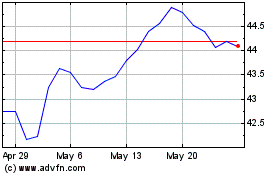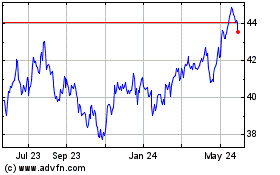The Association of Southeast Asian Nations, or ASEAN for short,
and their economies have had a long tradition of enticing investors
from all over the globe. This is because the market is an
attractive destination for domestic and foreign investors thanks to
solid growth rates, booming populations and generally good
governance when compared to other emerging regions of the
globe.
The region has recovered nicely from the shocks of 1998 and many
countries have developed significant capital stocks in order to
buffer themselves from future issues, a trend that could reduce
risk going forward.
Thanks to this and weak performances in some BRIC markets, many
countries have seen a substantial amount of inflow in the recent
past, sparking new developments in both the manufacturing and
natural resource industries (Three Country ETFs Struggling in
2013).
The high growth rates expected in these economies
also beats out their developed market counterparts by leaps
and bounds. The increase in per capita income and consumption in
the burgeoning middle class in these markets ensures that the rates
are sustainable.
These countries are also somewhat immune to Western shocks and
are an interesting option to invest in. However, there are certain
risks like liquidity risk, geopolitical problems, and currency
issues which can hurt the region (Top Performing ETFs of the First
Quarter).
Still we believe that these markets are tremendous options for
many investors and definitely worth a closer look. Below we have
highlighted some of the Southeast Asia ETFs that could make for
interesting picks for an investor, given the strong returns and
bright outlooks both in the near and long term:
Indonesia
The Indonesian economy, the biggest in Southeast Asia, appears
to be poised for good growth in 2013. This is largely attributable
to healthy domestic consumption, a favorable investment climate and
increased infrastructure development.
Low inflation and interest rates should also support economic
growth, helping the country to surge higher in the years ahead.
This, along with strong domestic consumption, has enabled the
economy to maintain a mid-single digit GDP growth rate for the past
eight years, suggesting impressive resilience for the Indonesian
economy.
Funds tracking the Indonesian economy have proved to be strong
performers in 2013 after a disappointing performance in 2012
(Indonesia ETFs: Can the Run Continue?).
Market Vectors Indonesia Small-Cap ETF
(IDXJ)
Among the top performers in the ETF world, Indonesian ETFs put
up a remarkable show in the first quarter. The fund has now
recorded an impressive year-to-date gain of 29.4%, easily crushing
pretty much every other ETF in the market.
As the name suggests, the recently launched IDXJ offers a
targeted exposure to the small-cap segment of the Indonesian market
thereby providing a better opportunity to tap domestic growth.
IDXJ manages an asset base of $10.4 million and provides
exposure to 27 small-cap securities of Indonesia. The fund charges
an expense ratio of 61 basis points annually.
The ETF appears to be concentrated in the top ten holdings to
which it allocates a hefty 58.04% of the asset base. Among sector
allocations, Financials dominates the list with a 42.1% share while
Industrials and Energy get the next two positions with allocations
of 24.8% and 11.7% of the asset base, respectively.
Other Indonesia ETFs
Among the ETFs providing exposure to the Indonesian economy,
performance of IDXJ has been the most striking in the new year.
However, the other two ETFs tracking the market, The Market
Vectors Indonesia ETF
(IDX) and the
iShares MSCI Indonesia Investable Market Index Fund
(EIDO), have also put up
a remarkable show in 2013.
In the year-to-date period, EIDO has returned 16% to investors
while IDX recorded a return of 12.6% (Can Indonesia ETFs Rebound in
2013?).
Thailand
Thailand seems to have recovered quite well and is expanding
rapidly after the strong flood that had hit the nation in 2011.
This is well evidenced by its fourth quarter GDP growth rate which
came in at a robust 18.9%, well above the consensus estimate.
Higher government spending and strong domestic demand helped to
mitigate the negative impact from lower exports. Additionally,
recovery in China and the U.S. will assist the nation to regain its
export business. The economy is expected to post growth of 4.5% to
5.5% in 2013.
In such a scenario, a look at the iShares MSCI Thailand
Investable Market Index ETF (THD) could
be a good idea. Attributable to the strong fundamentals of the
economy, THD has been able to perform really well in 2013 and post
significant returns in the year-to-date period (Top Ranked Thailand
ETF in Focus).
THD which holds 92 stocks in its basket has recorded a gain of
14.1% year to date. However, the fund appears to be concentrated
from both a sector and an individual security perspective.
While 49.5% of the asset base comprises of the top ten holdings,
among sector allocation, Banks comprise roughly one-third of the
total assets while Energy companies make up another fifth. Among
other sectors, the fund doesn’t invest more than 9.8%. The fund
charges a fee of 60 basis points on an annual basis.
Philippines
The Philippines has shown incredible resilience to the global
turmoil, posting a solid GDP growth rate. For the full year, the
region is expected to deliver a sharp growth rate of 6% as compared
to the earlier forecast of 5%.
Rating agencies have taken note as well, as in early 2012
S&P bumped the country's long-term foreign currency-denominated
debt to BB+ from BB, the highest rating since 2003. This does not
end here with Moody’s lifting its outlook on the economy to
positive and Fitch recently upgrading the region's rating to
investment grade (Philippines ETF Surges on Fitch Upgrade).
Additionally, the Philippines is supported by strong domestic
demand, low level of inflation and low credit-to-GDP and
loan-to-deposit ratios. However, a high unemployment rate may pose
an obstacle to the economy's growth path.
Clearly, the trends are continuing to be positive for the
country, suggesting that some might want to consider the area for
investment. One way to do this in basket form is via the
MSCI Philippines Investable Market Index Fund
(EPHE).
The return offered by EPHE is an ample proof of the strong
fundamentals of the economy. The fund has returned a robust 20.84%
in the year-to-date period.
The fund trades with an asset base of $221.4 million and
currently has just over 42 securities in its basket. Investors
should note that the fund is concentrated in the top 10 holdings
with more than 55% of investment.
Among sector allocation as well, the fund appears to have a
concentrated exposure. The maximum sector exposure is to Financials
(42.9%) and Industrials (25.48%).
Among others the fund does not invest more than 9.08%. The fund
charges a fee of 60 basis points on an annual basis (Too late to
Buy the Philippines ETF?).

Want the latest recommendations from Zacks Investment Research?
Today, you can download 7 Best Stocks for the Next 30
Days. Click to get this free report >>
ISHARS-EMG MKT (EEM): ETF Research Reports
ISHARS-MS INDON (EIDO): ETF Research Reports
ISHARS-MS PH IM (EPHE): ETF Research Reports
MKT VEC-INDONES (IDX): ETF Research Reports
MKT VEC-INDO SC (IDXJ): ETF Research Reports
ISHRS-MSCI THAI (THD): ETF Research Reports
VANGD-FTSE EM (VWO): ETF Research Reports
To read this article on Zacks.com click here.
Zacks Investment Research
Want the latest recommendations from Zacks Investment Research?
Today, you can download 7 Best Stocks for the Next 30 Days. Click
to get this free report
Vanguard FTSE Emerging M... (AMEX:VWO)
Historical Stock Chart
From Oct 2024 to Nov 2024

Vanguard FTSE Emerging M... (AMEX:VWO)
Historical Stock Chart
From Nov 2023 to Nov 2024


